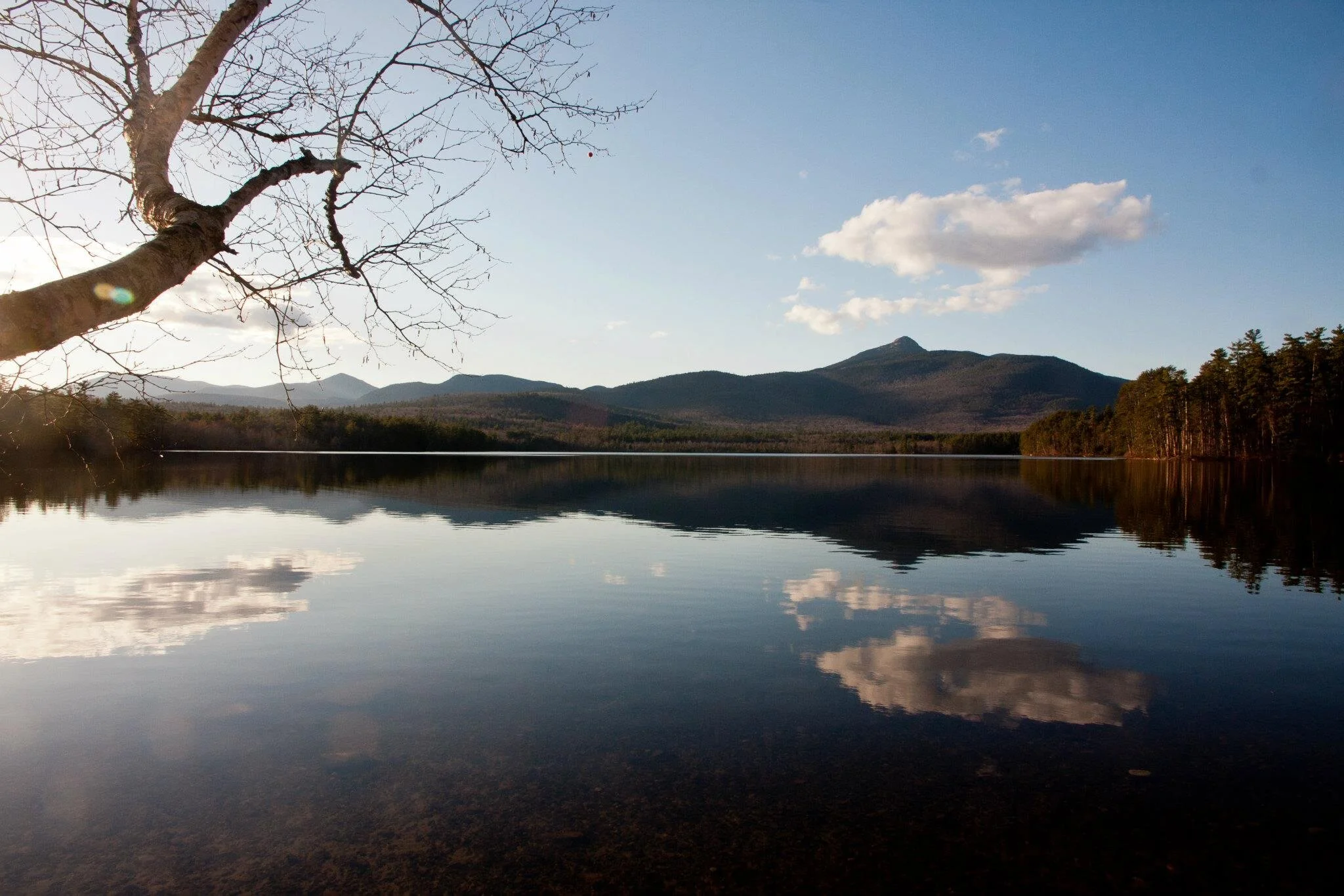We are excited to welcome Lynne Flaccus to the position of Stewardship Director. Lynne will be responsible for advancing the stewardship program of the Conservancy, which is responsible for managing or stewarding 3,800 acres of protected land in the Chocorua Lake Basin.
2014 Chocorua Lake Water Quality Results
Water Quality Testing at Chocorua Lake
Merger Implementation & Other Conservancy Activities
This Past Winter According to Chocorua Residents
Edited by Theo Page
Contributers: Alan Phenix, Pete VanderLaan, Marion Posner, Julie Lanoie, John Watkins
What was the past winter of 2014-15 like for those living in the Chocorua area?
We asked a few of them and they pretty much agreed — it was tough:
“It was the CONSTANT cold and having to stay in a lot just to keep the wood stove going, zero or below every morning, then wondering if the car or the snowplow would start and scraping windshields after sweeping off 6” of snow every other day. And roof shoveling! But my wood stayed dry and the house was never cold.” Alan Phenix
“Sitting in a cozy kitchen watching a mass of snow and ice moving off the barn roof—easily one foot thick and coming off like sheets of icebergs. The firewood is holding up—we’re in the third rack now. The horses haven’t been out of their blankets in over a month and they are bored. My tractor is in their paddock and they empty the tool box on it with their amazing lips, turn on the emergency flashes and lower all the hydraulics.” Pete VanderLaan
“Ice has become the enemy. It is strong. It defies my efforts to curb its power with sand, salt, or a multiple of products. It simply reforms, reinvents itself on top of my warring attempts, in a slick, slithery manner. There’s the perilous path from the safety of hanging onto the car door to the reassurance of the Post Office’s interior, or the glassy, glistening supermarket parking lot where you cling onto a cart for a semblance of safety.” Marion Posner
“But then there’s the beauty of ice—Jack Frost’s intricacies on the windows at dawn, the loud sense of silence when you stand on ice in the middle of the lake under the night sky." Marion Posner
"There was a long stretch of perfectly frozen, smooth ice before it snowed and skating across the lake was a winter highlight.” Julie Lanoie
“The month of February set records for prolonged cold [according to Ned Eldredge, one morning was thirty below zero]. Now the seed catalogues have arrived in abundance, daylight is longer, owls are mating and eagles arriving to snitch pickerel the ice fishermen leave. Three eagles ate 20 fish in one afternoon.” John Watkins
“Winter is such a silent sustained vigil here. Cars are silent with all the snow and just whoosh as they go by. But the sun is strong now—we can feel the ice and snow receding. The pine trees are waking up. You can just hear them. And a ladybug walked across my keyboard last night.” Pete VanderLaan
Chocorua Lake Conservancy is Formed
2012 Chocorua Lake Water Quality Report Now Available!
2011 Chocorua Lake Water Quality Report Now Available!
Mary Scott: A Remembrance
by Toby Page
The other day, Theo and I went to supper at a friends’ house and met Rob Emlen, the art curator of Brown University, and his wife, a fund raiser at Brown. The conversation turned to summer, and Rob mentioned that he used to visit his aunt’s house in New Hampshire.
It was Chocorua, and the aunt was Aunt Mary.
“Aunt Mary got married to Harry Scott in 1906. In those days the house had no electricity. Aunt Mary saw no need for it, and they used kerosene lanterns.
“One time, soon after they first arrived, Mary and Harry decided to take a walk around the field and woods. It began to get dark, and they got turned around, not sure of the way back. There were no lights in the house, you wouldn’t leave a kerosene lantern burning in the daylight when they left for their walk.
"Pretty soon it was close to pitch black in the woods.
“They didn’t worry, they had heard that if you to walk down hill eventually you would come to something you could recognize. They came to a wet bog. They went around the bog, now thoroughly turned around, but no longer going down hill. They wondered if they could be lost forever.
"But eventually they came to a clearing.
"Suddenly they saw bright lights on the tops of the trees, then lower down on the trees, then noise, then a truck coming at them. They stepped out of the clearing, and the truck rolled by.
“ ‘We must be on Route 16,’ they realized (Route 16 was then a narrow dirt road).
“But to go right or left? They went left, and soon they found their driveway, and were home again.”
“When was this,” I asked. “I don’t know, it might have been a little after 1906, or maybe 1920.”
I went home after supper thinking about Aunt Mary and the old Hammond farm.





